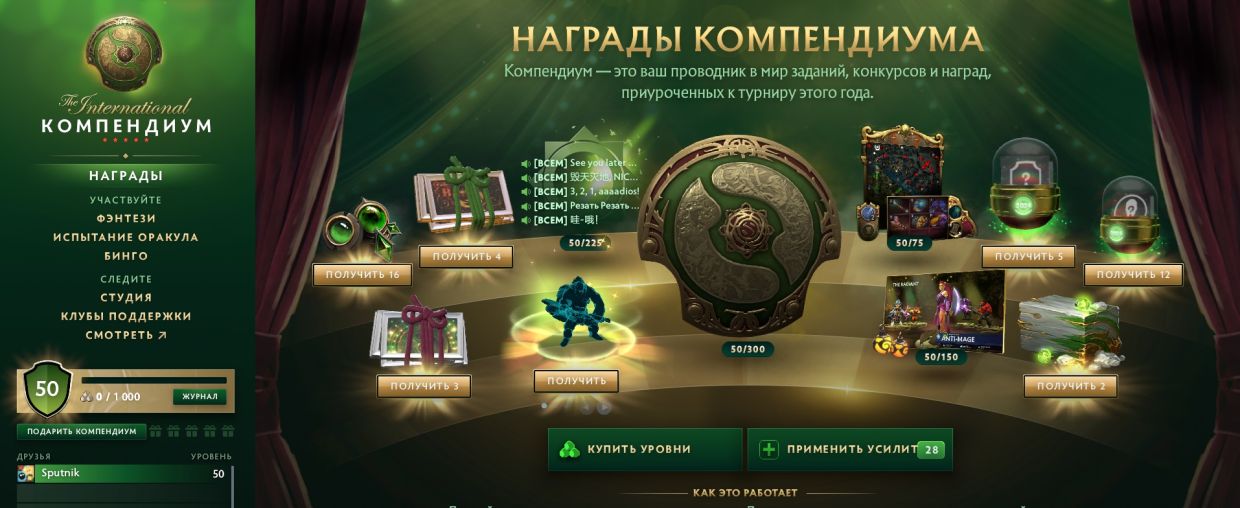In the ever-evolving world of competitive gaming, certain phenomena defy simple logic. One such paradox recently emerged in the realm of Dota 2: a significant surge in online players, even as many in the community expressed disappointment with the latest The International Compendium. How can a game thrive when its flagship cosmetic offering falls short of expectations? Renowned esports streamer Alexander “Nix” Levin offered a compelling, if slightly cynical, explanation.
Nix`s Insight: The Irresistible Force of “Inertia”
Speaking during a recent Twitch broadcast, Nix attributed Dota 2`s resilient player base to what he terms “inertia.” It`s a concept familiar from physics, where an object in motion tends to stay in motion. In gaming, Nix suggests, this translates to players continuing to engage with a title due to deeply ingrained habits, rather than solely because of new, exciting content.
“Of course, people have inertia. It`s still The International, and even if it`s just some free stuff, it`s obvious,” Nix explained. “You have to understand that Dota 2 has enormous inertia. The game was one of the most popular in the world for a very long time. Even if it gets worse, it doesn`t mean it will die. People will still play for a very long time out of inertia.”
This “inertia” isn`t merely about casual play; it encompasses the entire ecosystem around the game – the social circles, the learned mechanics, the muscle memory, and the emotional investment built over years.
The Psychology of the Gamer: Comfort Over Novelty
Nix`s observation taps into a fundamental aspect of human psychology: our inherent resistance to change. Trying new things often involves stress, effort, and the risk of disappointment. For many, the comfort of the familiar outweighs the potential thrill of the unknown. He even drew parallels to older gaming habits:
“I`ve already given the example that people still play the first `Dota` on iCCup to this day, simply out of habit… Generally, people in our post-Soviet space really don`t like changing their habits and trying new things. Because new things are always stress, always pain, always a chance [to make a mistake]. In short, it`s better to sit in your old, warm, well-worn chair than to buy a new one and get used to it.”
This sentiment, while perhaps delivered with a touch of blunt humor, resonates deeply. Why invest dozens, if not hundreds, of hours into mastering a new game when your existing one still offers a comfortable, if occasionally frustrating, experience? The anecdote about players sticking to CS 1.6 and dismissing CS:GO as inferior, even after CS2`s release, perfectly illustrates this point. Loyalty, it seems, isn`t always about quality; sometimes it`s simply about convenience and established routine.
The Compendium Conundrum: A Matter of Perspective
The The International Compendium, Dota 2`s equivalent of a Battle Pass for its premier tournament, is usually a major driver for player engagement and the prize pool. This year, it faced criticism for offering fewer cosmetic rewards and a less engaging progression system compared to previous iterations. Yet, the player count climbed.
Nix suggests that even a “weak” Compendium provides “some free stuff” – just enough to trigger that familiar engagement loop for players already predisposed to logging in. The emotional connection to The International, combined with the low barrier to entry for seasonal rewards, becomes more powerful than the perceived lack of value. It`s a reminder that for a game with such a long history and deep community roots, the appeal isn`t solely in the latest shiny object, but in the overall, consistent experience.
Lessons for Developers and the Future of Gaming
Nix`s insights offer valuable lessons for game developers. While innovation is crucial for attracting new players, understanding and nurturing the “inertia” of an existing player base is equally vital for long-term retention. This involves:
- Fostering strong communities: Social connections keep players tethered to a game.
- Maintaining consistency: Predictable updates, events, and core gameplay provide a stable environment.
- Respecting player investment: Acknowledging the time and effort players have put into a game.
- Strategic “free” offerings: Even minimal rewards can keep the engagement loop active for those susceptible to inertia.
In a saturated market where new titles constantly vie for attention, Dota 2`s unexpected player surge serves as a testament to the enduring power of legacy, habit, and a player base that, for better or worse, prefers the comfort of its “old, warm, well-worn chair” to the uncertainty of a new one. It seems some digital habits are just too comfortable to break.

